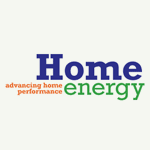|
|
Energy
We do not strictly control Google ad content. If you believe any Google ad is inappropriate, please email us directly here.
Sort results by: Date Added | Alphabetically - From The Healthy House Answer Book: Answers to the 133 most commonly asked questions. Questions 119-126.
- From The Healthy House Answer Book: Answers to the 133 most commonly asked questions.
- From The Healthy House Answer Book: Answers to the 133 most commonly asked questions. Questions 11-21.
- From The Healthy House Answer Book: Answers to the 133 most commonly asked questions. Questions 22-29.
- Green homes link sustainable materials and practices with better human and environmental health.
- Understanding what various ventilation-related terms mean.
- Designing and building an energy-efficient home.
- A preventive, systematic approach to health, safety and comfort is a homeowner’s best defense against poor air quality, unexpected breakdowns and expensive repairs.
- Another alternative to traditional roofing materials is a rooftop garden, or "green roof."
- CR also explains personal carbon footprints; the dark side of compact fluorescent light bulbs.
- Rather than leaving ventilation to chance, these systems exchange stale air for fresh air in your home, while helping to maintain indoor climate control.
- Web site allows consumers to calculate how their personal energy use contributes to greenhouse gas emissions, air pollution.
- A few tips smooth out this money-saving trick.
- With energy prices skyrocketing and the temperature continuing to spike, most homeowners dread receiving their energy bill in the height of summer. But what most homeowners don’t realize is that they could own a high performance home that requires much less energy.
- Few topics generate as much passion, and as much heated controversy, as the potential health effects of electromagnetic fields (EMFs).
- Start "going green" by replacing standard incandescent bulbs with compact fluorescent light bulbs (CFLs).
- Find out how to tell whether a product or action is "green" or not.
- Going green may be easier than you think.
- The Healthy House Institute built a model demonstration house designed to optimize occupant health by minimizing indoor air pollution.
- Most people have heard that tight houses cause indoor air pollution. Actually, this represents a simplistic view of the problem. Tight construction is, in reality, part of the solution. This article explains why.
We do not strictly control Google ad content. If you believe any Google ad is inappropriate, please email us directly here.



Information provided by The Healthy House Institute is designed to support,
not to replace the relationship between patient/physician or other qualified
healthcare provider.
Education Partners
Ads, ad links, products and content on this page are not necessarily endorsed by these organizations.
|

We do not strictly control Google ad content. If you believe any Google ad is inappropriate, please email us directly here.
|








